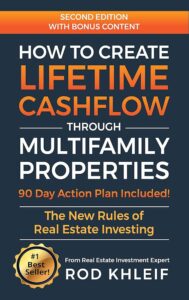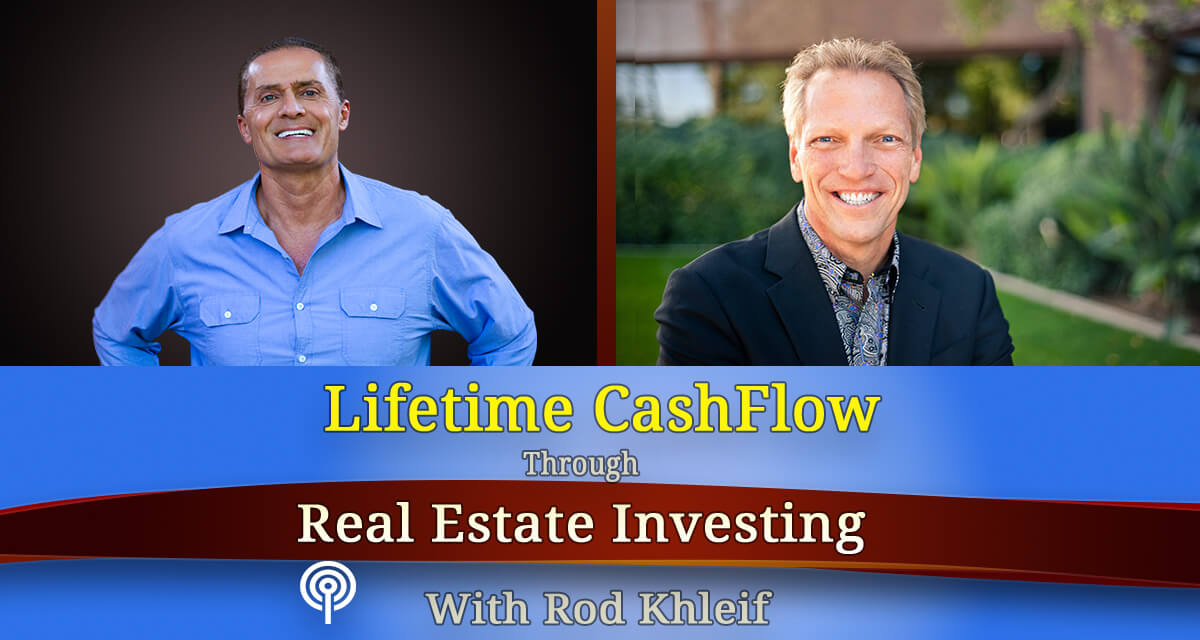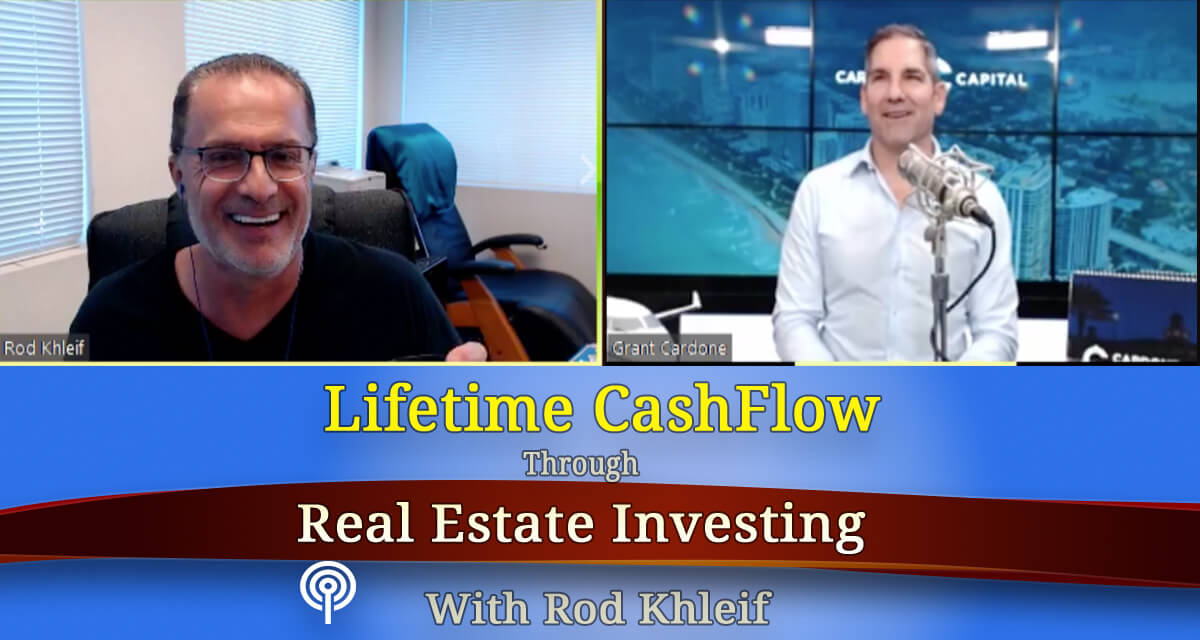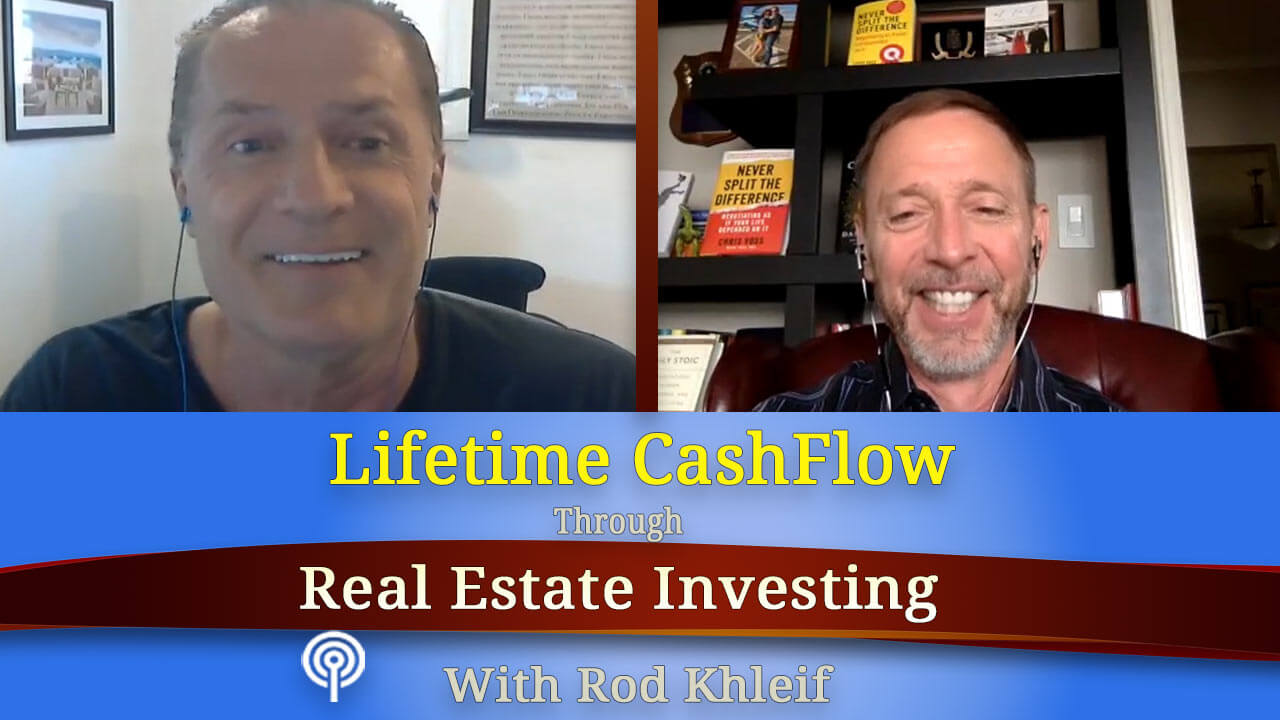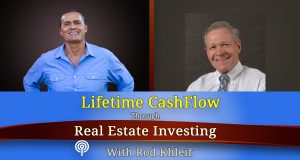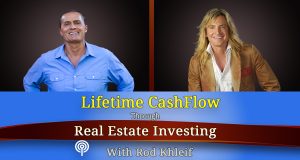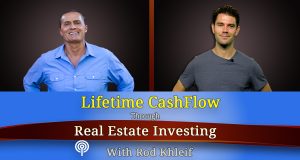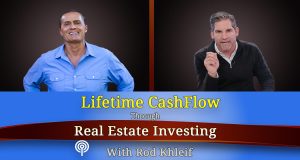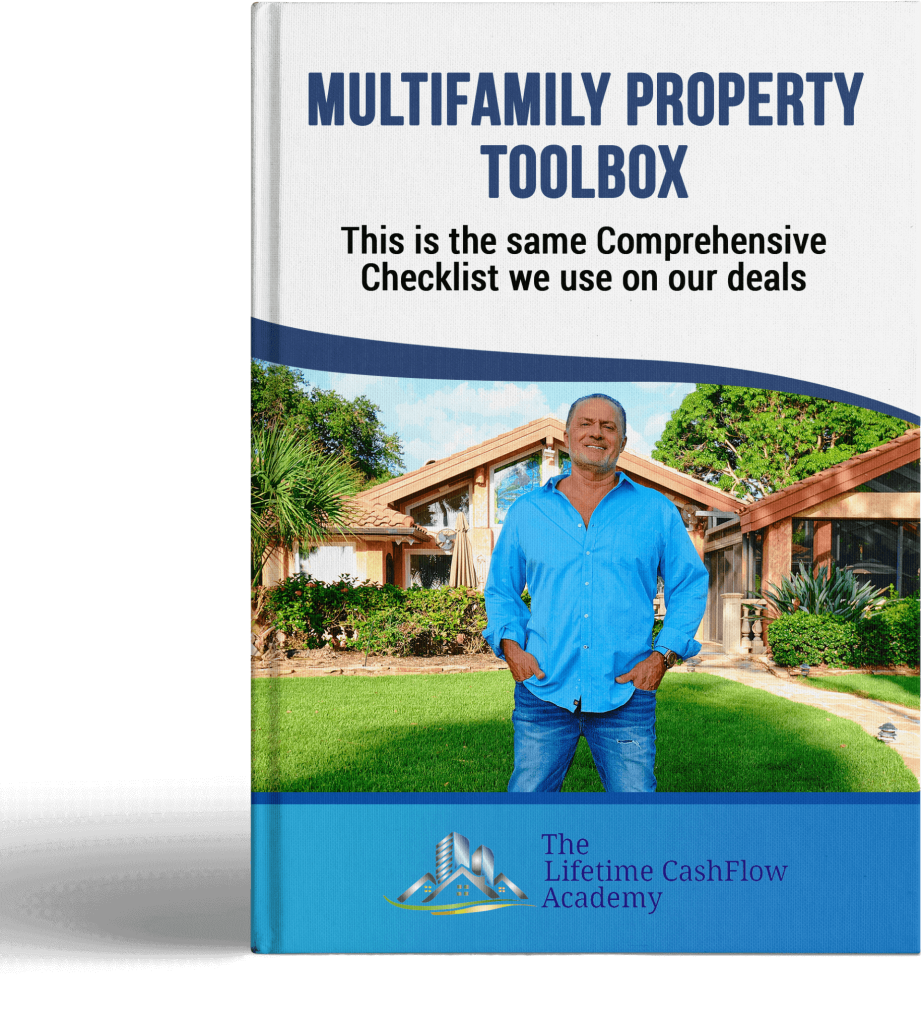Axel Ragnarsson Podcast Summary
In this episode of the Lifetime Cash Flow Through Real Estate Investing podcast, guest Axel Ragnarsson shares a five-step process for securing a multifamily real estate deal directly from a seller in just 90 days. He dives into essential strategies for defining acquisition criteria, selecting asset types, and crafting an effective direct-to-seller marketing plan. Axel also covers key topics like data list selection, skip tracing, cold outreach techniques, and building a powerhouse local brand to establish credibility and generate off-market deal opportunities.
Listeners will gain actionable insights on optimizing their investment approach, avoiding common mistakes, and leveraging direct marketing strategies to scale their real estate portfolio efficiently. If you’re an investor looking to master real estate economics and dominate the economics of real estate, this episode is packed with invaluable guidance.
Here’s some of the topics Axel Ragnarsson covered:
- How to Secure a Property 00:00
- Defining Your Acquisition Criteria 2:11
- Choosing Your Winning Asset Type 4:03
- Crafting the Ultimate Business Plan 6:17
- Buying the Perfect Data List 9:02
- Skip Tracing Magic 14:26
- Your Acquisition Timeline 19:20
- Building a Powerhouse Local Brand 23:22
- Email List Hacks for More Deals 25:42
To find out more about partnering or investing in a multifamily deal: Text Partner to 72345 or email Partner@RodKhleif.com
For more about Rod and his real estate investing journey go to www.rodkhleif.com
Please Review and Subscribe
Full Transcript Below:
00;00;00;06 – 00;00;25;03
Axel
What’s going on, everybody? Welcome back to the Lifetime Cash Flow Through Real Estate Investing podcast. I’m Axel Magnuson I am not Rod Khleif. but as you’ve probably heard on one of these last couple of episodes that have been released on the podcast feed, I’m going to be joining the podcast every once in a while to talk about direct to seller marketing, prospecting, and finding off market multifamily deals just at a high level.
00;00;25;06 – 00;00;44;20
Axel
And every once in a while, I’m going to do a solo training type of episode. And that’s what this one’s going to be here. And in this episode, we are going to be talking about the five step process that multifamily investors can follow to put a deal into contract, direct a seller in the next 90 days. So a little bit different than buying a property in the next 90 days.
00;00;44;23 – 00;01;08;21
Axel
that would be challenging given there’s obviously the closing timeline associated with buying a multifamily asset. But in this video, what we’re going to talk about are in this episode, I should say, what we’re going to talk about is how you can actually start marketing directly to sellers, and to do so in such a way to where you are putting yourselves in the position to actually tie up a property, to put a property under contract in the next three months, in the next 90 days.
00;01;08;23 – 00;01;22;05
Axel
So what I’m going to do here is run through these five steps. I’m going to spend a little bit of time within each step to actually dissect what I’m talking about. I’m going to assign some timeframes to these steps as well, in terms of when you should be completing them and how long it should take you to complete them.
00;01;22;08 – 00;01;52;09
Axel
and then I’m going to rounded out in the end with some final thoughts here. But let’s get started with step number one, which is you need to very accurately define your acquisition criteria. And when I say acquisition criteria, I specifically mean where you want to buy properties, right? The location in which you are going to be marketing and looking for properties, the type of asset itself and there’s all kinds of different, qualifiers around the asset in terms of size, in terms of your built all of that stuff, which we’ll get into.
00;01;52;11 – 00;02;19;21
Axel
And then the business plan associated with the property or the project that you want to pursue. So let’s start with location here. just talking about an MSA or a city oftentimes is not going to be enough as it relates to marketing directly to owners, especially when you’re just starting to go down this road. If you are new to marketing to owners, new to marketing directly to sellers, prospecting to sellers, you need to have a pretty clear definition of exactly where you want to be doing.
00;02;19;21 – 00;02;45;15
Axel
So. So for example, let’s say you are somebody who is investing in the Tampa MSA. You want to invest in Tampa, Florida, the Tampa area. Right? It’s a pretty vague, high level definition of where you actually want to buy. That said, there are a number of neighborhoods and zip codes that comprise the city of Tampa, Florida. And when you’re going to start marketing to owners, you need to really clearly define exactly where you want to be buying properties.
00;02;45;17 – 00;03;07;01
Axel
And that’s a extremely critical early in the process because you want to make sure your time is best spent. You want to make sure your marketing dollars are best spent, as it relates to where you’re actually pursuing deals. So from a location standpoint, you shouldn’t just be looking at it from a high level as it relates to the city that you want to buy in, or the state that you want to buy into the county, you should be getting pretty granular as it relates to the zip codes you want to be in.
00;03;07;03 – 00;03;25;14
Axel
And in general, you should be putting yourself in a position to when you pull your data list, which jumping ahead, we’ll talk about next. You have a pretty clearly defined list itself. Next, as it relates to asset, you should be very, very clear on exactly what you want to buy from an asset size standpoint and a type standpoint.
00;03;25;16 – 00;03;46;02
Axel
So for example you can categorize based on unit count in the multifamily space. So let’s say you want to buy small and mid-sized apartment buildings. That’s what you’re financially able to buy. That’s what you’re comfortable pursuing from a a deal size standpoint. So let’s say you want to buy 5 to 20 unit multifamily properties, or let’s say you’re a little bit more experienced, but you haven’t done anything direct to seller.
00;03;46;02 – 00;04;00;19
Axel
And you want to look at stuff that’s a little bit bigger. Maybe you’re looking for 30 to 80 unit properties, right? And you’re starting to define your your size range and a little bit of a larger fashion. And you’re looking for slightly larger deals, but you want to make sure that you’re defining the unit count range of what you’re pursuing.
00;04;00;22 – 00;04;15;26
Axel
And you also want to make sure that you’re defining the actual physical type of asset that you’re pursuing. So there’s a couple of different things here. You’re built. Let’s say your target deal is something that’s been built in the last 50 years. Right. So you’re going to look for stuff that’s built from the 70s all the way up till now.
00;04;15;26 – 00;04;37;05
Axel
You’ve got a pretty wide criteria. Well, you should still define that in your acquisition criteria so that you can filter that in a data list, which we’re going to get to. You should also be defining exactly, what type of construction you want to buy. Now again, beggars can’t be choosers in a lot of markets. Right. Maybe there’s not going to be enough inventory in terms of where you’re actually pursuing deals.
00;04;37;07 – 00;04;56;21
Axel
For you to be getting that granular with what you’re looking for. You know, there’s garden style, there’s mid-rise, there’s high rise. You know, there’s walk ups. If you’re in, you know, New York City, for example, you can there’s anything from 2 to 5 story walkup type buildings. But if you want to start getting granular there, this is where you’re going to do so in terms of defining it within your acquisition criteria.
00;04;56;23 – 00;05;13;15
Axel
and then you could try to define a little bit further than that if you, if you really want to get specific, I think anything more than that in terms of marketing directly to seller or directly to sellers, or communicating this to deal finders in your marketplace might be a little overkill in terms of like flat roof versus pitched roof, stuff like that.
00;05;13;18 – 00;05;35;03
Axel
But in general, you want to define the type of construction that you want to pursue. For a lot of folks, this is like, I want to buy stuff built in the 70s, 80s or 90s that are garden style apartments or, you know, ranch style concrete block construction. If you’re in Florida, whatever it is, you should define it. Lastly, you should define the ideal business plan, the type of project that you want to get into.
00;05;35;05 – 00;05;58;22
Axel
A lot of people talk about buying value add multifamily, which has a whole slew of different definitions to different people. There’s anywhere from light value out to moderate to heavy value add to significant redevelopment, where you’re actually knocking down, portions of a property and redeveloping into some other use or something along those lines. And it’s important that you define what you’re pursuing in that respect as well.
00;05;58;22 – 00;06;23;27
Axel
So for example, in our business, we like to look for light to moderate value adds, which I define as anywhere from 5 to 20 grand per unit and renovation spend. And that doesn’t include like a significant re tenants of the property where we’re taking a property who has or is currently occupied by a number of C and D class residents, and bringing it to an A or B, that would get you into the heavy value add space, because then you have a management component to it.
00;06;23;27 – 00;06;42;28
Axel
In terms of the value add, you have a significant renovation spend and you’re working through a lot of different things. So in our business we like the light to moderate stuff. and again you may be open to buying a lot of different things and that’s okay. But you should still divine or define, excuse me, what’s most ideal as it relates to the types of deals that you want to pursue.
00;06;43;00 – 00;07;02;03
Axel
So an example of a very accurately defined acquisition criteria would be as follows. Let’s say you’re in the Tampa, Florida region and you say, I want to be in I don’t know Tampa as well. So I’m going to maybe botch this, but you might want to be in, you know, Southeast and southwest Tampa in these specific zip codes.
00;07;02;06 – 00;07;21;18
Axel
You want to buy properties that are between 5 and 30 units in size that are ideally concrete block construction, but for sure, that have been built in the 70s, 80s or 90s. And you want to buy deals that have a light to a moderate value, add component to them, and are not going to be really significant. Repositions.
00;07;21;20 – 00;07;42;07
Axel
An example of a poor acquisition criteria would be I want to buy multifamily in Tampa. Like that’s not very descriptive. It’s going to be very hard for people to associate what they have. If they’re a deal finder. And, if you’re going to go out there and buy a data list, that’s also a very wide criteria, it’s going to be hard to filter that data list effectively.
00;07;42;10 – 00;07;56;20
Axel
So you’re going to be putting yourself in a position where you’re not associated with a specific type of deal that well. And that’s going to be a problem. So a step up in terms of something that would be a little bit better, right. In terms of the spectrum here would be I want to buy 5 to 30 unit properties in Tampa.
00;07;56;22 – 00;08;16;26
Axel
Still vague, a little bit more defined. And again, you work your way down the spectrum into what I, previously mentioned, which is these specific sectors, this specific size range, this age range, this type of construction, etc.. So that’s step number one is very accurately defining your acquisition criteria. And this shouldn’t take you any more than you know, a few days.
00;08;16;26 – 00;08;34;23
Axel
Right. You should be getting this done within just a few days. Step number two is you’re going to actually go out there and buy a data list that you are then going to use to actually market and prospect directly to owners. So this is where we’re pulling all of the information from any various number of sources. I’ll share them in a second.
00;08;34;25 – 00;08;58;14
Axel
That list the property address of which we would like to buy it. List the owner’s name or owner’s entity. It lists the owner’s mailing address. and then once we skip trace that list, which I’ll share in a second, it has the owner’s phone number and owner’s email. Right. So we have a few different pieces of data that we can leverage and that we can utilize to actually get in touch with the ownership, group or the owner themselves.
00;08;58;16 – 00;09;18;11
Axel
So now that you have your acquisition criteria, you’re basically downloading that on your data list. You have your zip code, you have your neighborhoods, you have your unit count range, etc. you have all of this stuff effectively defined. So now we go over to any number of, data sources. I’ll just list a few of them. You have list source, you’ve got prop stream, you’ve got Rihanna.
00;09;18;11 – 00;09;39;06
Axel
I mean, if you really want to spend a couple of dollars and sign up for a subscription, you can ask somebody for a costar list or sign up yourself. I mean, that’s probably going to be cost disadvantageous if you’re a small multifamily investor and you don’t have like a you don’t have a ridiculous budget to pull off of, but you can ask a real estate broker, you know, a mortgage broker, you know, somebody, you know, in the industry to pull a list for you.
00;09;39;08 – 00;10;07;07
Axel
But long story short, our objective here is we want to get a data list. And those are the different areas that we’re going to go to get it. Now some comments here. You don’t just want to buy a data list of your acquisition criteria without any filters around ownership. Because again, our objective when we’re marketing directly to owners is we want to get in touch with folks who have some level of motivation, who have some desire to sell above and beyond just what a standard owner would have.
00;10;07;10 – 00;10;24;02
Axel
And there’s all kinds of different motivation, which, I’ll probably be doing an episode of on on this specific topic at some other point, because it’s a very deep topic, but at a high level, people are motivated to sell based on numerous lifestyle changes. They want to retire. you know, they just don’t want to be in real estate anymore.
00;10;24;02 – 00;10;44;25
Axel
They want to go and invest that capital elsewhere. they have some partnership challenges, you know, maybe there’s, they’re going through a divorce, something like that. Right? There’s all kinds of different motivation. But the most common type of motivation is I’m old, I want to retire. That’s typically going to be who the seller is. In most of these situations.
00;10;44;29 – 00;11;08;11
Axel
Over 50% of these situations, at least in our experience, as own as, as investors that have done this for a while. So you want to filter your data list to include or excuse me, to exclude properties that have been bought in the last call it three years, four years, five years. And this is going to depend on how filtered you want your data list to be.
00;11;08;13 – 00;11;30;02
Axel
If you are in a small market and let’s say the number of properties on your list without any filters as it relates to ownership is only like 100 properties. like you’re just doing this in a small town and you’re, you’re going to start marketing in a small town, small region, small, you know, neighborhood. Well, you probably don’t have to add any filters based on ownership because you have such a small list anyways.
00;11;30;04 – 00;11;51;05
Axel
But let’s say you have a wider range. Let’s say you are that investor that is truly interested and really wants to buy literally anything located in any neighborhood in Tampa, and you pull your 5 to 30 unit list. Well, there may be a few hundred properties on there. 400, 500, I don’t know. I haven’t pulled it, but it’s probably going to be a larger number in terms of the individual assets that fall within that criteria.
00;11;51;07 – 00;12;03;27
Axel Ragnarsson
And that’s a bit of a bigger list. You’re probably going to be spending some money and time marketing to that list that could be better spent elsewhere, because you’re going to be getting in touch with folks that maybe bought the property a year ago and they’re like, dude, I just bought this. I have no interest in selling it, right?
00;12;03;27 – 00;12;34;06
Axel Ragnarsson
It doesn’t make any sense to me to sell it. I you’re only offering me what I paid, I’m going to pay transaction costs, doesn’t make sense, etc. so in that situation you want to add some of these ownership filters to it. You want to exclude properties sold in the last few years, which increases the likelihood that everybody on that list is going to be interested in selling, or maybe not interested in selling, but interested in at least hearing an offer, or able to sell at a price that makes sense for you, which would likely be at a discount because they’ve owned it for a period of time, probably have some equity, etc. and again, the
00;12;34;06 – 00;12;53;23
Axel Ragnarsson
more the, the more years you exclude in terms of recent sales, the more filtered your list is going to be, the more likely it is that the people on that list are going to be interested in selling or at least hearing an offer. So, for example, if you want to get extremely granular, you can filter no sales in the last seven years, eight years, ten years.
00;12;53;26 – 00;13;08;20
Axel
And maybe that’s the best case scenario. That’s the best approach for you if you’re going to be marketing in an area that is very dense in terms of the number of properties that are there. If you’re in a Boston, Massachusetts, if you’re in a New York City, if you’re in Los Angeles. Right. I’m just naming big cities here.
00;13;08;20 – 00;13;23;29
Axel Ragnarsson
But if you pull all the 5 to 30 unit properties in those markets, you’re going to get a very large list, and you’re going to have to filter that down in such a way that it’s approachable in terms of what you can actually do. There. So in general here, you’re going to take your acquisition criteria from a location standpoint.
00;13;23;29 – 00;13;42;11
Axel Ragnarsson
From an asset standpoint, some data providers are going to let you maybe, edit it based on construction based on some of those, you know, those other components to it, you’re built, etc. you’re going to put that in your list, your your data platform of choice. You’re going to filter based on ownership to get to your desired list size.
00;13;42;13 – 00;14;04;04
Axel Ragnarsson
And then at that point, if your data provider isn’t giving you emails and phone numbers, you’re going to do what we call a skip trace. And there’s all kinds of services that are available to help you skip trace. In terms of the actual process of finding the name, excuse you not the name, but the, phone number and email for all of the ownership names on that data list itself.
00;14;04;06 – 00;14;22;19
Axel Ragnarsson
And we need that because that’s how we’re going to go out there and get in touch with these folks. So lead Sherpa batch leads are a couple. If you Google real estate skip tracing, you’re going to find a dozen results. They’re all relatively similar. if you do use a costar, Rianna me, oftentimes they will provide that data for you, so you won’t have to go do that.
00;14;22;22 – 00;14;44;09
Axel Ragnarsson
But if you’re using a, pay per list service, like a list source or a, or a props room or something like that, you probably will need to go and do that. So let’s recap the first two steps here. We have defined our acquisition criteria extremely diligently and in a very clear, you know, very plain English, very clear, there’s no, you know, we’re not going to have any misconceptions about what we’re looking to buy.
00;14;44;11 – 00;15;00;09
Axel Ragnarsson
We have bought a data list and we’ve skipped trace it. So we have all of the information we need to go out there and actually start marketing directly to owners and sellers. And again, the closing comment with, with step two here, anybody who is marketing direct to seller, direct to owner is only as good as their data.
00;15;00;11 – 00;15;22;09
Axel Ragnarsson
So you really want to make sure that the data that you have is data that you want, and data that you feel confident in marketing and prospecting too. So really make sure you get the step right, or else you’re just going to be either wasting money on marketing, you’re wasting time on prospecting. Now. Step number three depending on your time and your budgets, you’re going to pick two marketing strategies.
00;15;22;11 – 00;15;43;22
Axel Ragnarsson
And again I’m going to outline a handful of these. So we have direct mail marketing. That is you spending money as an investor in blanketing a larger number of individuals with marketing material that conveys the messaging and tells them that you want to buy their property, you are basically paying for leads. You are exchanging dollars for leads if you want.
00;15;43;22 – 00;16;02;26
Axel Ragnarsson
If you don’t have a big marketing budget or you have the time to prospect, you can cold call, you can call text, you can call the email, or, you can do some combination of those things. Right. But again, what we want to do here is we want to pick two strategies, because it’s easier to stick with two for a longer period of time.
00;16;02;26 – 00;16;21;27
Axel
And it’s easier to learn two and become proficient at two in the beginning, obviously, comparatively to doing a bunch of these 3 or 4 or more and doing just one is not going to put you in a position to where you are actually having conversations with sellers at a level high enough to actually put yourself in a position to put a property in a contract in the next 90 days.
00;16;22;00 – 00;16;38;24
Axel Ragnarsson
So let’s say you love being on the phone. You you’re not intimidated by the idea of cold calling. You have the time to do it. You have the desire to do it. You pick. Cold calling is one of your strategies. You need to pick another strategy to pair with that. Let’s say you have some level of a budget, right?
00;16;38;24 – 00;16;56;03
Axel Ragnarsson
Your list is 300 properties. you’re willing to spend $100, or, excuse me, a $1 per mail. So you’re going to spend $300 a month on marketing to that list. All right, so then that’s a good situation to be in. You can send your 100 direct mail or your, excuse me, or 300 direct mail pieces at a dollar each.
00;16;56;06 – 00;17;13;18
Axel
You’re going to spend $300. You’re going to get in front of these owners, via direct mail. But then you’re also going to cold call and increase the likelihood that you are hitting them in multiple different ways, and making it more likely that you’re going to have conversations with sellers. That’s one version. Let’s say you have $0 to spend on marketing.
00;17;13;18 – 00;17;32;21
Axel Ragnarsson
You are, you just have no ability to spend money on marketing. All you have is time and energy and hustle. You can cold email them and cold call or cold email and cold text lets you have plenty of money to spend on marketing, but you just absolutely hate the idea of cold calling. Maybe you’re going to spend, you know you’re going to filter your list a little bit differently.
00;17;32;21 – 00;18;05;19
Axel
You’re going to, basically build out a list that has a higher number of properties on it. You’re going to send your direct mail to that list, and then you’re going to send cold email or something like that. That’s less confrontational regardless of what your approach is. Here’s the the process that needs to be followed. Early in the month, you’re going to reach out with one of your chosen strategies, whether that’s sending a direct mail campaign, whether that’s emailing all of the owners, whether that’s cold calling, and then later in the, in the month usually, or on the seventh of the 15th, at least in our business, you’re going to follow up with your
00;18;05;19 – 00;18;29;14
Axel Ragnarsson
other channel, and that’s going to reference your first attempt at contacting them. Hey, did you receive my direct mail letter? Hey, did you receive that email sent you? Hey, did you receive that voicemail that I left? Whatever it is you want to reference it and you want to start building on what you’ve already done to establish more common commonality and to plant deeper seeds with the owners that you are actually reaching out to.
00;18;29;17 – 00;18;49;26
Axel Ragnarsson
All of this should be done. I’m talking steps one, two, and three in terms of you’re defining your two approaches, actually working through that first contact. This should all be done within seven days. And that second contact with your second chosen strategy should be another seven days later. It should be 14 days in at this point, in terms of completing steps one through three.
00;18;49;28 – 00;19;07;07
Axel Ragnarsson
And the reason that we want to compress all of this in inside of a timeline as possible is because the success that comes with going direct to seller and doing all of this comes with time. It compounds with time. You need to put yourself in a position to touch these owners three or 4 or 5 times over the next 90 days.
00;19;07;07 – 00;19;28;25
Axel Ragnarsson
So put yourself in a position to have quality conversations, and to put a property under contract, and to at least increase the likelihood that you’ve earned the right to to get a deal done here. Right? If you only send one round of direct mail in 90 days, you have not done nearly enough to get a deal done. If you send one round of direct mail and you do one round of cold calling in 90 days, it’s a little bit better.
00;19;28;27 – 00;19;51;16
Axel Ragnarsson
But still, you have not done enough to to put yourself in a position to get a deal done or put a deal on the contract. If you send the direct mail and you cold call each month for three months, that’s six contacts. You’ve now extended just a lot of I mean, you’ve put in the work here and you’ve extended the time horizon of what you have, what you’ve already done to a point to where you’ve done it over 90 days.
00;19;51;16 – 00;20;28;20
Axel Ragnarsson
You’ve done it twice a month. That’s six points of contact. And assuming your data is good, you are now in a position to have had conversations, and you’re already probably speaking with owners throughout that period of time. So to recap step number three here. Depending on your budget, whether it’s time money, pick two strategies and get that first round of communication out, whether that’s spending money on direct mail, whether that’s cold emailing this list, whether it’s cold calling everybody on the list within that first 7 to 10 day period of time, and then you want to make sure that a week after that you are going back to your list and you’re spending it again,
00;20;28;26 – 00;20;50;00
Axel Ragnarsson
whether it’s you’re now mailing and you want to follow up on your cold call, whether you’re emailing and following up on your piece of mail, whatever it is, you are now going out to your list with that strategy and referencing what you did the week prior so that your building coming out, you’re building some level of, of familiarity with all of the folks on your list and you’re planting deeper seeds.
00;20;50;02 – 00;21;14;11
Axel
Again, just as a high level comment here, we want to be in the business of planting a smaller number of seeds, but planting them deeper and not planting a ton of seeds, but planting them in a shallow fashion. Right? That’s a maybe a bootleg metaphor here, but we would rather go really deep with a list of properties that we really want to buy, which, again, which is what we touched on in steps one and two versus getting a wide, you know, a list of a lot of properties that we kind of want to buy.
00;21;14;13 – 00;21;47;06
Axel
Because, again, we have these conversations. We want to put ourselves in a position to aggressively pursue these deals. Obviously, we want to buy great deals. We want to buy a discount below market deals, but it’s often going to be the situation where you can more aggressively pursue the deals that very closely align with your acquisition criteria. Not only that, you’re going to be significantly more emotionally invested when a seller that really fits your core list calls you after they receive your direct mail piece because you know you really want to buy that property, you’re going to be a less emotional investor.
00;21;47;06 – 00;21;59;07
Axel
When some guy calls you who’s got, you know, a five unit, but you really want to buy a 10 to 30 units is a little smaller than where you want to, you know, where you want to buy. It’s also in a market that you don’t really know that well, because you just kind of are blanketing this whole metro.
00;21;59;09 – 00;22;15;05
Axel
You’re not going to follow up with that lead as effectively, you’re not going to spend as much time on seeing that lead through, and therefore it’s making it harder for you to actually do a deal, put a property in a contract. Right. Which is why we’re doing all of these different things. So to recap, the first three steps, we want to very accurately define our acquisition criteria.
00;22;15;05 – 00;22;36;14
Axel
Step one should be done within a few days. Step two we want to go buy a data list filtered from an ownership standpoint in such a way that gives us the list that we feel comfortable, confident pursuing. That’s number number two. Again, that should only take a couple more days or a few days in here. In five days in step number three, we want to pick our marketing strategies or our marketing and prospecting strategies.
00;22;36;14 – 00;22;56;18
Axel
We want to pick two of them. And we want to start in that first seven day period of time with that first one. And then again, we want to follow up within a week later with that second one. That takes us to step number four, which is we want to begin establishing our local branch. We want to start working towards becoming omnipresent in our local market.
00;22;56;20 – 00;23;17;29
Axel
This is what we have to do in order for individuals in the marketplace to bring us deals. So this is a little different than a direct a seller situation. But again, a direct to seller deal does not have to be one where you are the one who reaches out to the seller. There are many situations where somebody knows of somebody that might be interested in selling, and they connect you with them.
00;23;17;29 – 00;23;35;04
Axel
They say, hey, you should go give so-and-so a call and they’re trying to sell this property. Or they say, hey, you know, hey, John, I have this seller who is working with our management company. He’s a management client of ours. He’s, he’s interested in selling, and they actually facilitate a connection that’s still, by definition, direct a seller.
00;23;35;04 – 00;23;54;23
Axel Ragnarsson
Right? We don’t have a broker involved. So again, we need to do what we can to to establish our local branch so that we increase the likelihood that people want to bring us deals. Step number one in doing this is to reach out to everybody, you know, who’s active in the multifamily real estate sector in that marketplace, and let them know exactly what your acquisition criteria is and what you want to buy.
00;23;54;25 – 00;24;09;07
Axel Ragnarsson
So we’ve already done that in step one. So now it’s just a matter of let’s go and let’s go and email all of the brokers that we know in this marketplace. Let’s go email all of the lenders and the mortgage brokers we know. Let’s go and email all the title companies. let’s go in email all the property management companies.
00;24;09;07 – 00;24;33;22
Axel Ragnarsson
Let’s go email all the service providers, the foreign companies, electricians, the painters, etc.. Hey John, my name is Axel. I’m currently in the market to buy so and so in this market, you know, we really like deals that kind of look like this. It’s low value add low rents. you know, long term owner. That’s really something that speaks to us, etc. if you find anything that works for that, please consider giving me a call or reaching out.
00;24;33;22 – 00;24;51;14
Axel Ragnarsson
And I’m happy to throw your referral. Fear a finder’s fee. Maybe we can talk about a joint venture, partnership, etc. and now you have a bunch of people working on your behalf in addition to you working on your own behalf, going out there, marketing and prospecting. So again, the objective here is to share that with all of these different individuals in your network.
00;24;51;17 – 00;25;16;21
Axel Ragnarsson
Once you share it, you should be taking all of the email addresses to all of these different individuals and putting them on an email list. Plenty of services that can help you do this. MailChimp, HubSpot, whatever. Get all of their emails on there and start sending a monthly newsletter that shares, your acquisition criteria. Maybe some value add market info, all kinds of different publications that can help with that.
00;25;16;23 – 00;25;44;11
Axel Ragnarsson
So, you know, this is the quarter one vacancy rate in southern New Hampshire is ex, the median home price, you know, median home prices have increased X percentage in, Manchester, New Hampshire by Y, you know, in Q1 of 2024. average rents grew like this. This business is moving into town. This this business is moving out of town, whatever it is, if you think it would be valuable to you as an owner to know this, you should be putting it in your email marketing newsletter.
00;25;44;13 – 00;26;02;05
Axel Ragnarsson
And then there should also be some commentary at the top. The personalizes you with the recipient. Hey, our business just put this under contract or business, just close this. We just refinanced this property. We just sold X. Whatever it is, you should be sharing some information around what’s going on within your business in addition to some value add content.
00;26;02;12 – 00;26;18;24
Axel Ragnarsson
In addition to a reminder of what your acquisition criteria is and what you’re looking for. And this is something that you should be sending out on a monthly basis in the first 90 days. Maybe you can send it out three times, because it’s going to take you throughout that first 30 days to get it done. But you should at least be sending it out twice.
00;26;18;24 – 00;26;39;26
Axel Ragnarsson
You know, beginning of that second month, the beginning of the third month. And it should put you in a position to have real conversations with the other people that are in the marketplace doing something similar to what you are doing, whether or not they’re buying property or not. They’re interfacing with multifamily investors and owners, and they have as much of a sense of what’s going on as you do, given that you’re kind of new to this game.
00;26;39;28 – 00;27;00;02
Axel Ragnarsson
and starting to do this from scratch. So again, that would be step number four here as it relates to how you can start becoming omnipresent. You are going to go out there and reach out to every potential deal finder, wholesalers, brokers, mortgage brokers, residential agents, you know, etc. I listed a bunch. Introduce yourself. If they don’t know you, share your acquisition criteria.
00;27;00;02 – 00;27;16;27
Axel Ragnarsson
Share how you can be of value to them as well. If they do know you, you’re just reminding them. And then you’re taking all of those emails and you’re putting it on an email newsletter that you can then send recurring emails to on a monthly basis. So again, we’re going to recap the steps. Step one acquisition criteria. Step two buying your data list.
00;27;17;00 – 00;27;40;00
Axel Ragnarsson
Step three picking two marketing strategies or prospecting strategies that align with your time and budget. or the or, you know, basically how much time you have and how much money you have available to spend. Some number three is going to begin establishing your local brand. You’re going to begin to becoming omnipresent in your marketplace. And now once we get that done, we repeat and we repeat monthly.
00;27;40;02 – 00;28;01;08
Axel Ragnarsson
And it’s important to understand here that when you start going down this road, you need to be comfortable doing this in perpetuity. This is not something that you do for a period of time to get a deal. And then you stop. This is a very important, mindset shift that you need to make before you even begin going down this road.
00;28;01;14 – 00;28;30;26
Axel Ragnarsson
Right? In multifamily sales cycles or longer, sellers are going to be motivated for different reasons, and they’re going to be motivated at different times. We are in the game of just being top of mind. We are in the game of being around, being available, being the first person that people think of when they think of either a I want to sell my property and there a seller, or b I know this guy who wants to sell a 20 unit building and, and you know, this zip code or this area of town.
00;28;30;28 – 00;28;46;02
Axel Ragnarsson
I know that so-and-so likes to buy that. I know John really likes buying those deals. I’m going to I’m going to let him know that, you know, my management client is interested in selling or my, you know, client over. It’s an attorney is interested in selling, what have you. We’re just in the business of constantly being top of mind.
00;28;46;02 – 00;29;00;20
Axel Ragnarsson
We just want to build mindshare over time. Again, you can do a lot in 90 days as a relates to getting in front of owners, right? And in the first 90 days, all of the direct to sell work is going to be what generates the quick leads and the quick conversations and increases the likelihood that you put a deal on a contract.
00;29;00;22 – 00;29;22;13
Axel Ragnarsson
What pays you dividends long term is becoming the omnipresent figure in your marketplace through all of the things I mentioned in step four, and that’s why we’re doing it initially, is because, sure may generate some leads. It may help you, have some conversations with others. You may catch somebody in your network at the right time as it relates to a seller that they’re working with or what have you.
00;29;22;16 – 00;29;43;14
Axel Ragnarsson
But all of that work is what pays long term dividends as you build the mindshare with all of the players in your marketplace, and all of the direct to seller work is is the faster returns. And even then, the long term tailwinds is what happens after you do that for a longer period of time. Over the course of six months, nine months, 12 months and beyond.
00;29;43;17 – 00;29;59;02
Axel Ragnarsson
So again, it’s critical that while you come in, you’re coming into this with understanding what you need to do over the next 90 days to start this process and to increase the likelihood that you put a great deal on the contract in the next 90 days. It’s important to have the patience and the perspective to see this through for 900 days, right?
00;29;59;02 – 00;30;19;05
Axel Ragnarsson
Multiple years. You need to be looking at this through a very long term lens, because the best deals that you ever buy in this business, from a discount to market value standpoint, are typically going to come in situations where you have been in contact with an owner for a multi-year period of time. And again, that sounds intimidating because it takes a lot of work and it’s a long period of time, and that’s correct.
00;30;19;08 – 00;30;47;18
Axel Ragnarsson
But that is the really important dynamic of this is that when you speak with a seller, every couple of months, they get your newsletter, you follow up with them every 90 days, and you do that for a couple of years. An absurd amount of trust and rapport has been developed, and they’re almost at the point, you know, at that point, if you’ve been in touch with them for that long where they’re disinterested in what other people have to say, and they’re completely interested in what you alone are looking to do here and what you’re willing to pay and how you’re willing to approach this deal.
00;30;47;20 – 00;31;04;27
Axel Ragnarsson
And again, you just have to earn that right over a longer period of time. And that’s why step number five is you’re going to repeat monthly dot dot dot in perpetuity. And once you commit to the longer term focus here, that’s when you really start to see the deals. But everything I talked about in this episode is going to be applicable in the short term as well.
00;31;04;27 – 00;31;30;09
Axel Ragnarsson
And that’s also important to know. That’s it for this episode though. I appreciate you guys listening. I’m hoping that you took something away from this. And again, if you’re looking to learn more about direct to seller marketing, finding off market multifamily deals, stay tuned for other episodes that are similar to this, where I dive deep into specific topics, whether it’s related to direct to seller marketing and prospecting or other components of finding great off market deals at a discounted price, which is obviously our objective as multifamily investors.But thanks again for listening. I’ll catch you guys on the next episode.




